Annual and perennial ground covers: catalog of flowers and plants - their names and photos
Annual and perennial ground cover plants, which in some sense serve as an alternative to the lawn, will help to fully emphasize the beauty of your garden, although they themselves look very organic and advantageous on it. By the way, such plantings are sometimes also called carpet flower beds.
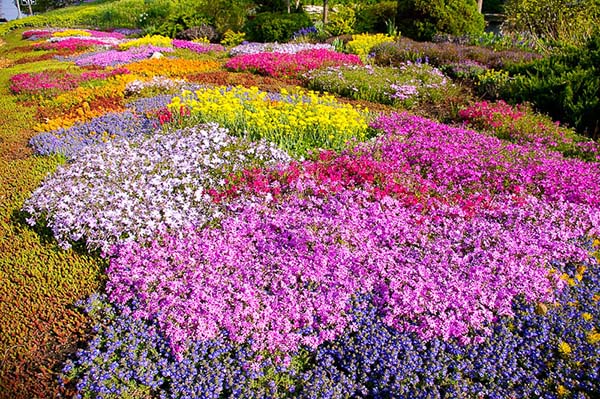
Content
- 1 Ground cover plants for the garden
- 2 Annual ground cover flowering plants
- 3 Perennial ground cover plants and flowers
- 3.1 Alissum
- 3.2 Aubrieta (aubretia)
- 3.3 Stachis (chastets) Byzantine
- 3.4 Carnation herb
- 3.5 Phlox subulate
- 3.6 Saxifrage
- 3.7 Periwinkle
- 3.8 Alpine Arabis
- 3.9 Veronica
- 3.10 Rejuvenated (Stone Rose)
- 3.11 Loosestrife
- 3.12 Garden lilies of the valley
- 3.13 Kaluzhnitsa
- 3.14 Creeping tenacious (gourd)
- 3.15 Sedum (sedum)
- 3.16 Purslane
Ground cover plants for the garden
Plants are called groundcover due to the fact that when they grow, they completely cover the ground on which they are located, like a carpet. In addition, they can bloom beautifully, albeit in small flowers, but so numerous that sometimes you cannot see the leaves.
Ground cover plants are widely used in the garden. With their help, you can beautifully arrange miniature compositions, use them as a background when creating an alpine slide, and plant them between stones in rockeries. They look picturesque along the paths and on flower beds in combination with other flowers. They are typically used to create a backdrop for larger plants or to fill voids in flower beds.
Annual ground cover flowering plants
In most cases, not very large areas are planted with flowering annuals and they are made of borders, rabatki, and also planted in the foregrounds of flower beds.
If you have a certain permanent composition of perennials, which is updated every year without transplanting them, then it can be diversified with ground cover annuals, planting them between perennials and making small flower beds.
Lobularia
This is the queen of annual ground cover plants. Lobularia has numerous bright flowers that smell very delicate. When it grows, it covers almost the entire space. You can plant both monochromatic lobularia and make a whole colored carpet out of several colors.
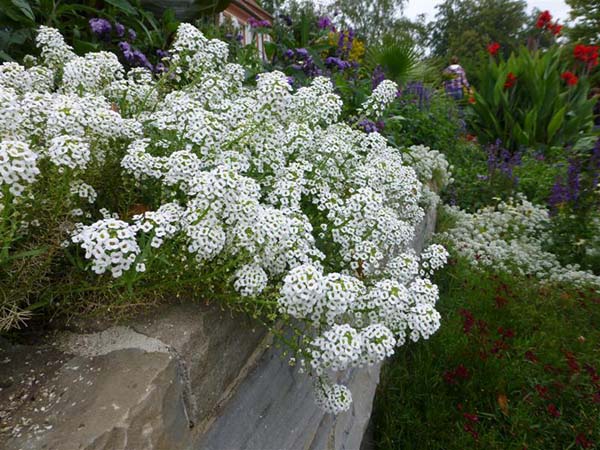
Note! The site already has detailed materialabout growing lobularia.
Ever-flowering begonia
This is another favorite of ground cover annuals. It grows and completely covers the soil on which it is sown. It has very bright but simple flowers. It is noteworthy that begonia blooms before the frost itself.
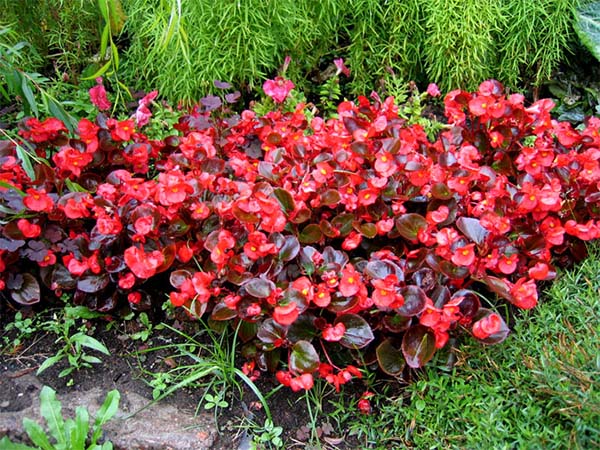
By the way! The site already has a detailed articleabout growing begonias from seeds and tubers.
Lobelia
It is great to use lobelia as an annual groundcover. This plant has a very interesting property: when it grows, the lobelia shoot, touching the ground, takes root and becomes an independent plant. Thus, this ground cover plant completely populates the area on which it is planted.
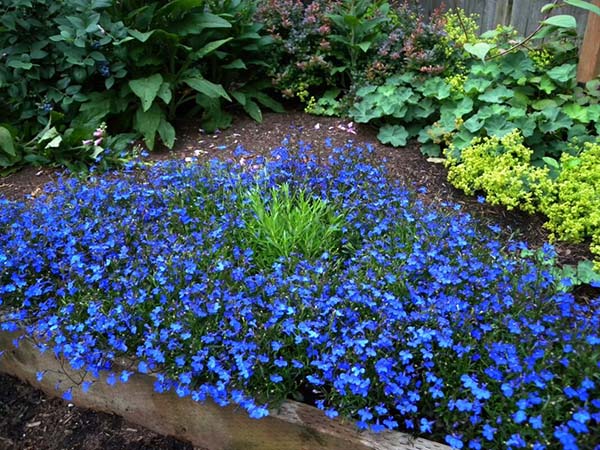
In our conditions, it is grown only as an annual, but in the fall you can dig up a couple of plants and plant in a pot so that the lobelia overwinters at home, and the next year you can plant it again in open ground.
Advice! If you liked this groundcover, thenin this material you will find all the information about planting and growing lobelia from seeds.
In general, lobelia grows incredibly fancifully and blooms in pots, flowerpots and flower beds.
Ageratum
Ideal for use as a ground cover. When this annual plant grows, it forms dense bushes that bloom in "balls" of different colors.
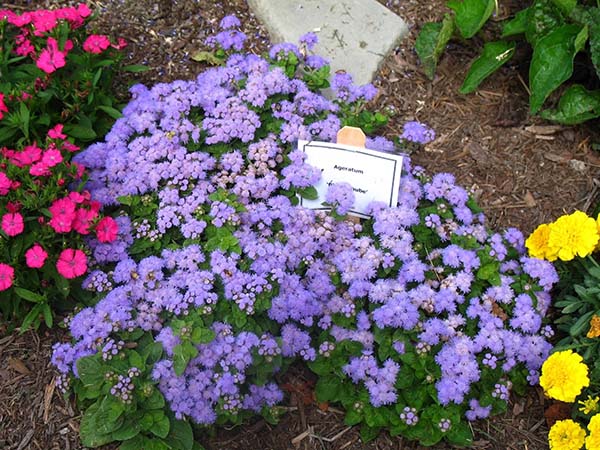
Very often, various original and funny floral ornaments are made from ageratums of different types and colors.
Phlox
Annual phlox look no less attractive as annuals. These are low-growing and brightly flowering plants that are best placed in the foreground, especially next to ornamental deciduous shrubs.
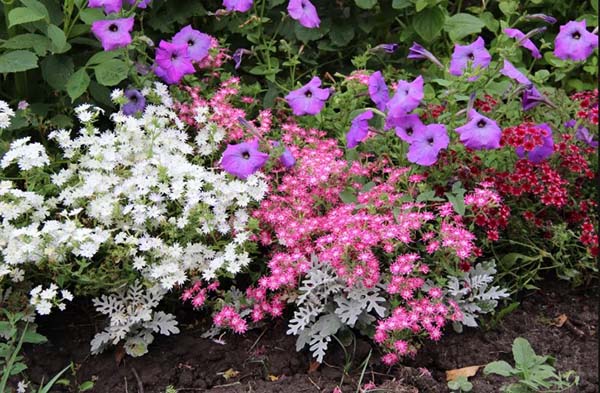
By the way! On the site you can find all the information;about planting and growing annual phlox.
Iberis umbrella
This is a gorgeous and wonderful honey-smelling plant that should be sown directly into the open ground, but can reproduce well by self-sowing. The height of the stems is up to 25-35 cm. It is frost-resistant, unpretentious, easy to care for. Used in landscape design.
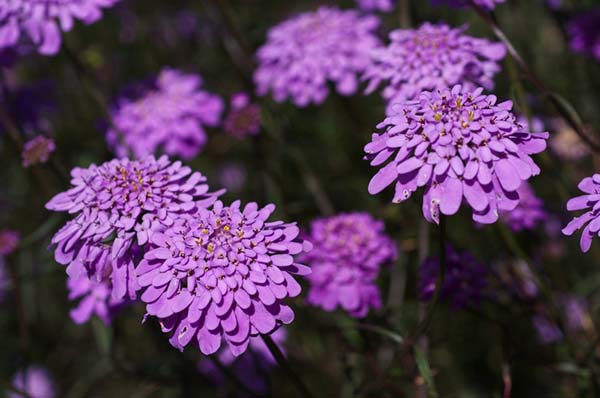
Thus, plots can be planted with one type of ground cover, can be combined with each other, but if you renew annual plants on your site every year, then every year you will not be dull and fun, because your garden will look different every time.
Perennial ground cover plants and flowers
Ground cover perennials are one of the most popular and irreplaceable plants for the garden, which are not only very decorative, but also useful.
Perennial ground cover plants have a number of advantages:
- unpretentious in care;
- can grow on almost any soil;
- can grow both in the sun and in the shade (preferably in partial shade);
- protect the soil from sunlight, in other words, from overheating;
- They pay off quickly, since their seeds (seedlings) need to be bought once, sown (planted), and they will delight you for many years.
The cultivation, care and reproduction of perennial ground covers are generally very similar.
Alissum
Alyssum is considered one of the best ground cover perennials. The plant is not very demanding and drought tolerant. It grows fast enough, so it is necessary to control its growth using pruning. Blooms from spring to autumn (April to October). Ideal for decorating borders.
Interesting! Lobularia is an annual type of perennial alissum.
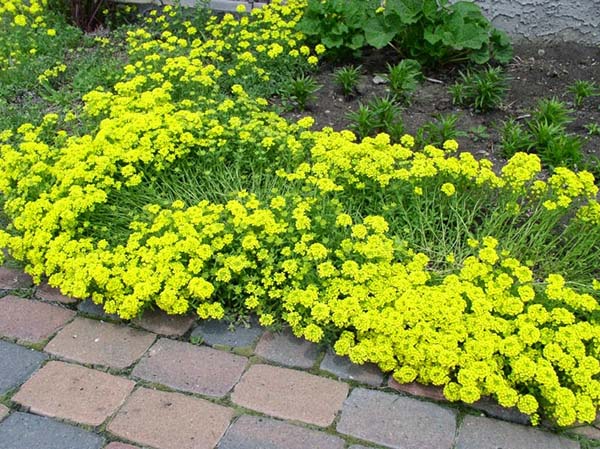
Note! The site already has detailed materialabout growing alissum.
Aubrieta (aubretia)
These perennial ground covers are intertwined with short shoots, thereby forming a dense carpet strewn with numerous small flowers. After the plant has faded, pruning must be carried out, which stimulates the growth of shoots and re-flowering. It reaches a height of 10-15 centimeters. Propagated by seeds, cuttings and dividing the bush.
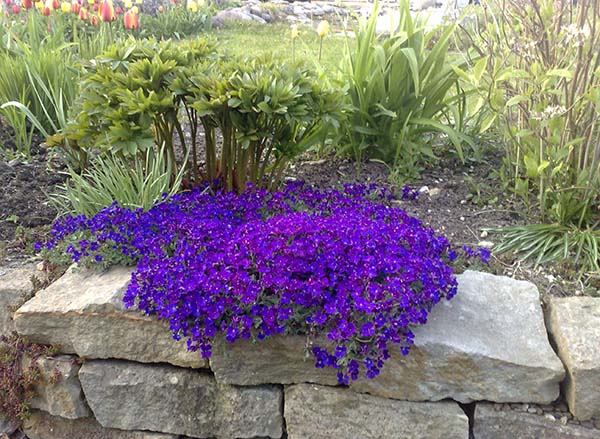
Stachis (chastets) Byzantine
Its soft and silvery leaves are often referred to as sheep's ears. It blooms with graceful spike-shaped inflorescences of lilac flowers. Decorative all season. Propagated by seeds, dividing the bush and cuttings. Good for framing paths and flower beds, and also expressively sets off the beauty of host, geyher and other decorative deciduous plants.
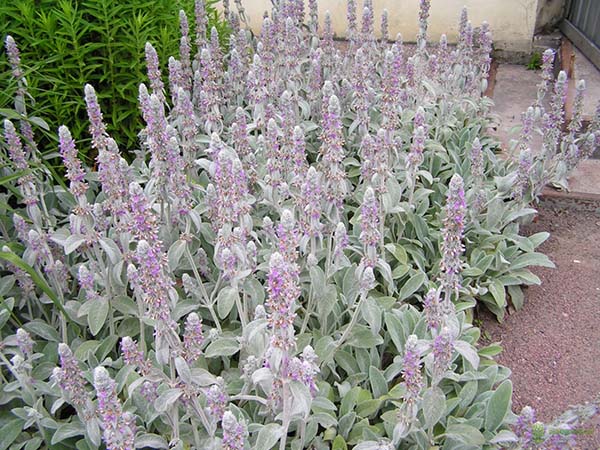
Carnation herb
In order for the plant to bloom beautifully and profusely, it must be planted in a sunny place, in the shade it will not declare itself. Stem height is no more than 10-15 cm. Propagated by dividing rhizomes in autumn or spring, as well as by seeds. Does not tolerate stagnant water, but freely tolerates drought. Very hardy. Blooms from late June to mid-October.
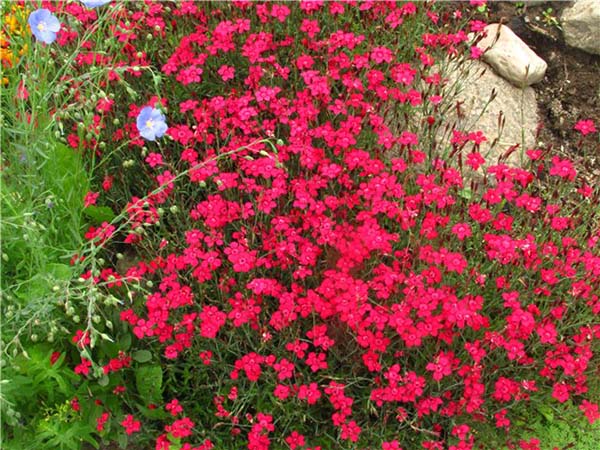
Phlox subulate
One of the most beautiful perennials, sometimes called the king of pillows. Easy to care for and very drought tolerant, suitable for growing in sunny areas. It grows well. Blooms from late April-early May to mid-June, and again in August-September. Plant height is no more than 10 centimeters.
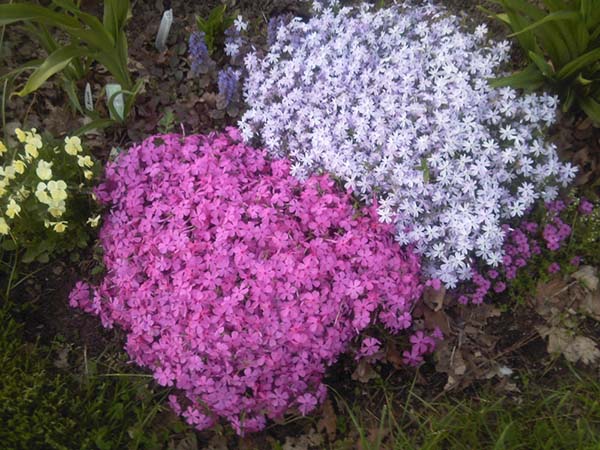
Important! On the site you can find all the information;about planting and growing perennial phlox.
Saxifrage
The plant forms small bumps from the leaves, on which thin stems with small flowers rise. Propagated by seeds and dividing the bush. Plant height from 5 to 20 centimeters.
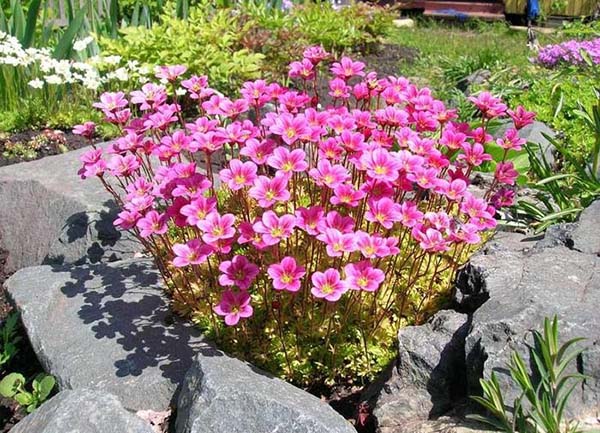
Periwinkle
Evergreen perennial. It grows in a matter of days, takes root, covering the ground with shoots. Periwinkles almost do not need care. It blooms in May and again in September. Propagated by seeds, cuttings, layering and dividing the bush. Plant height up to 20 centimeters.
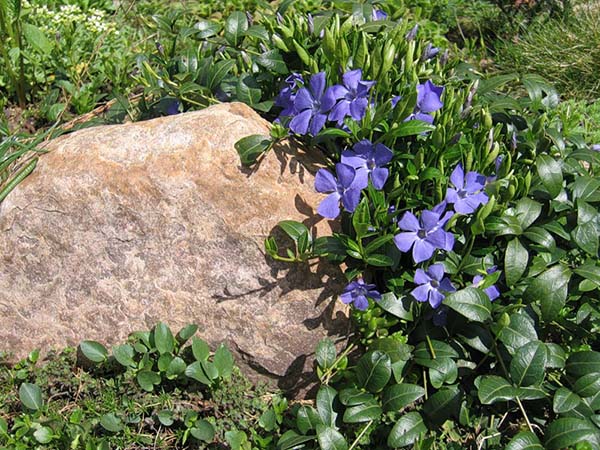
Alpine Arabis
It is best planted in rocky gardens. Prefers sunny places, but can grow in partial shade. It has an unusually beautiful silvery-green foliage and a white border, due to which Arabis looks very colorful throughout the season. It blooms with many large semi-double flowers. Height up to 20 centimeters.
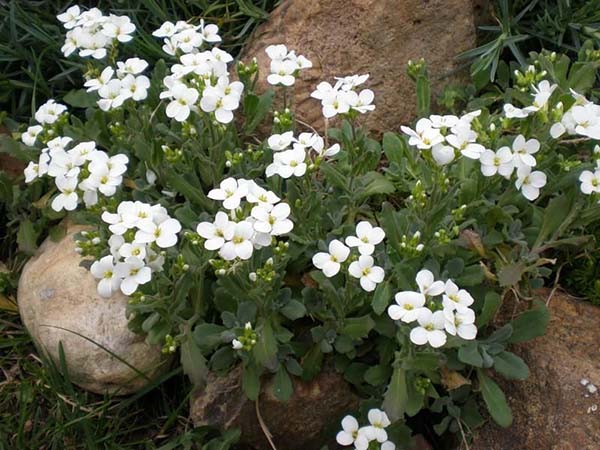
Veronica
The plant has amazing filamentous creeping stems that can grow up to 20 centimeters per season. Has a very long flowering - from May to September. Can be planted both in the sun and in the shade. The plant is very resistant to trampling, moreover, Veronica is able to displace plants in the neighborhood. Propagated by seeds, layering and self-seeding. Plant height from 3 to 5 centimeters.
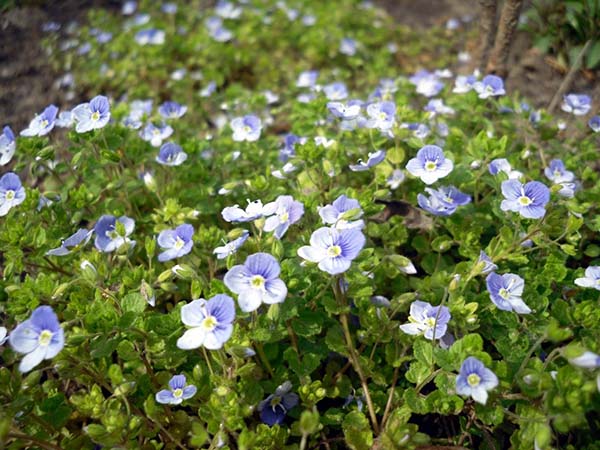
Rejuvenated (Stone Rose)
The very name "rejuvenated" speaks of its appearance that never fades throughout the season. It does not require any maintenance at all, does not even need watering. Prefers to grow in full sun. It goes well with stone.Propagated by rooting twigs.
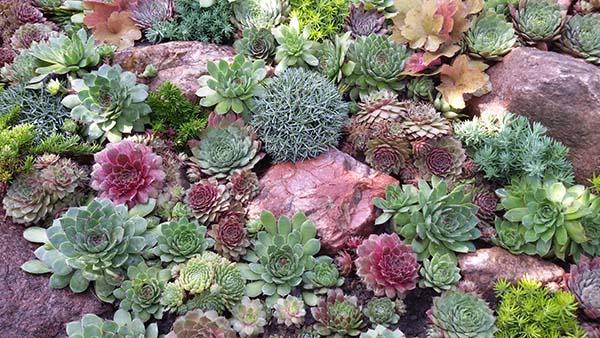
Loosestrife
A rapidly growing ground cover with distinctive bright yellow candle inflorescences. Shade-loving, tolerates waterlogging. Very hardy. It multiplies by division. Up to 10 years can live in one place. They are used in landscape design and in ornamental gardening.
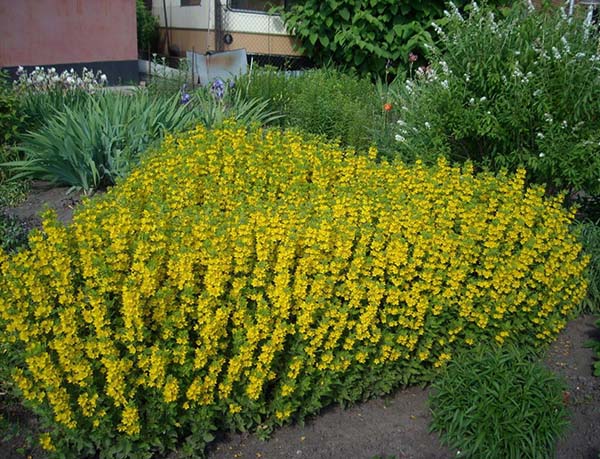
Garden lilies of the valley
Perfect fit for landing in the shade... The best way to reproduce is by dividing the bush. Of course, it is possible with seeds, but their germination rate is very low. Reach heights up to 25 centimeters.
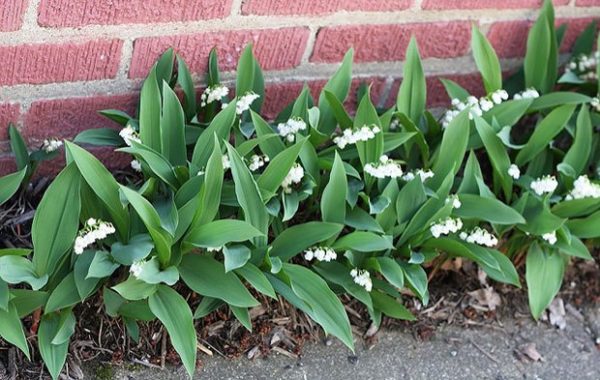
By the way, if you do not know what to plant in the shady area, then take a lookthis article about shade-loving and shade-tolerant plants.
Kaluzhnitsa
It grows very quickly. It has beautiful expressive foliage and blooms beautifully with yellow flowers that shine in the sun, which makes the plant even more decorative. Reproduction methods: seeds, cuttings and dividing the bush. Up to 20 centimeters high.
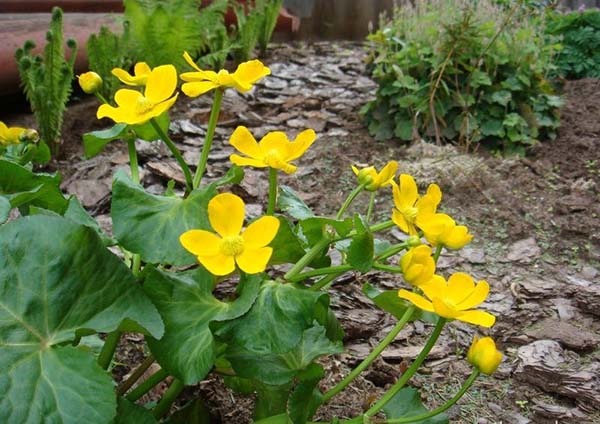
Creeping tenacious (gourd)
The plant can be grown in shady places, but if you want to get a bright flowering, then it is better to plant a gourd in partial shade. Ideal for lawns without grass due to its ability to dislodge neighboring plants. It reproduces successfully with the help of a mustache. Height up to 15 centimeters.
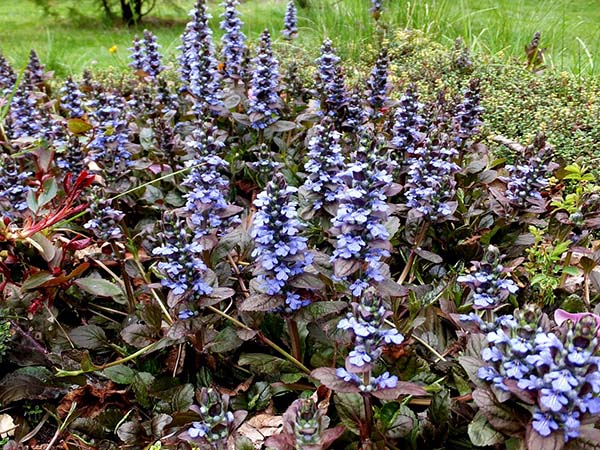
Sedum (sedum)
It is widely used in garden design, especially in rockeries landscaping. Absolutely unpretentious in care. It can grow both in the shade and in the sun, in other words, it is suitable for any place in the garden. Promotes the retention of moisture in the soil. Blooms from June to September. Propagated by seeds, cuttings, dividing rhizomes. Height from 5 to 25 centimeters.
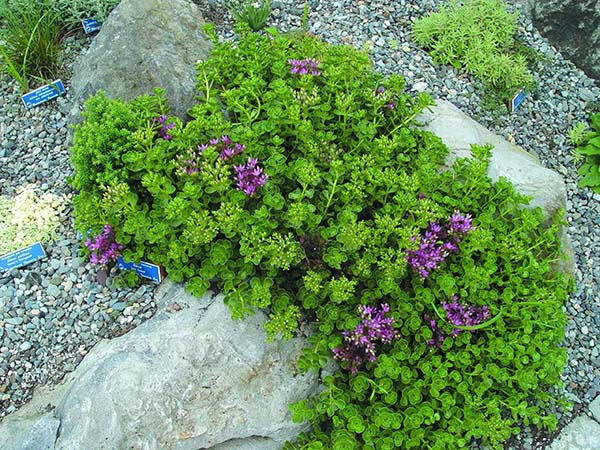
Video: sedum (sedum) - a perennial flowering ground cover
Purslane
It reproduces by self-seeding and does not require special attention to itself, except that it is necessary initiallyplant correctly... If you sow different varieties, then its dense mat will constantly change its color and structure. Feels comfortable in sunny areas.
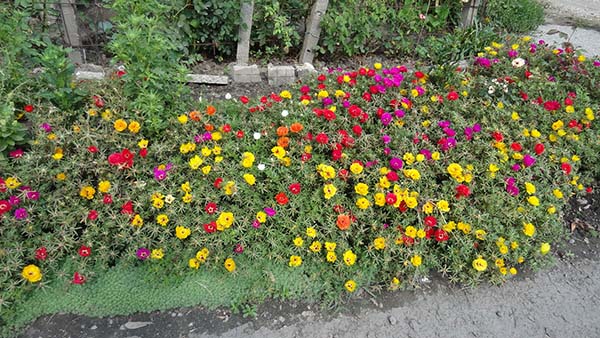
Thus, playing a secondary role, ground cover perennial flowers are a real find for the garden. Nevertheless, both in terms of decorativeness, and in terms of benefits, and in terms of ease of care, they successfully compete with all other plants.
Video: ground cover perennial flowers

